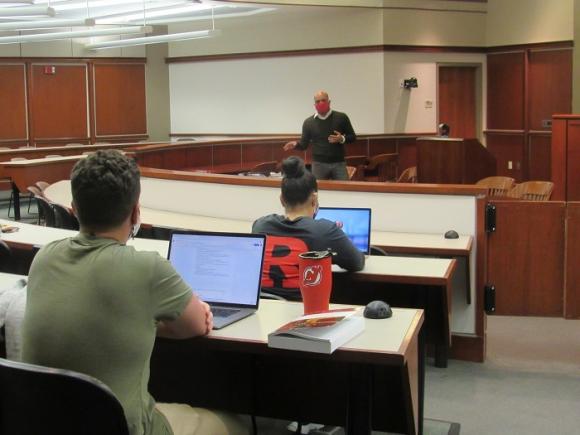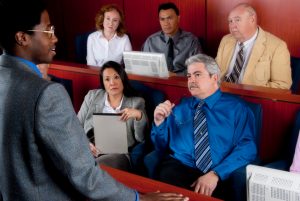Leading Strategies for Creating Impactful Trial Presentations in Courtroom Settings
Leading Strategies for Creating Impactful Trial Presentations in Courtroom Settings
Blog Article
Navigating the Intricacies of Trial Presentations: Tips for Seamless Distribution and Engaging Disagreements
In the world of lawful process, the art of test discussion stands as a crucial factor of success. The complexities intrinsic in test discussions need a fragile equilibrium of technique, finesse, and skill.

Comprehending Trial Goals
To properly browse a trial, it is essential to have a clear understanding of the goals that require to be accomplished. Prior to entering the court room, lawful groups must define their goals and desired outcomes. These goals function as directing principles throughout the trial, shaping techniques and influencing decision-making processes.
Comprehending trial goals involves an extensive analysis of the case, legal precedents, and the customer's benefits. Trial Presentations. It calls for a thorough exam of the realities, recognizing crucial problems, and expecting prospective challenges. By setting quantifiable and certain goals, attorneys can customize their debates and discussions to straighten with the preferred results
Moreover, a clear grasp of test goals enables lawful groups to prioritize proof, witnesses, and lawful arguments effectively. It permits for the advancement of a coherent story that reverberates with the judge and court, enhancing the overall instance presentation.

Organizing Evidence Effectively
Having a clear understanding of test purposes lays the foundation for organizing proof successfully in legal process - Trial Presentations. By straightening the presentation of evidence with the wanted results of the trial, lawful teams can reinforce their debates and improve their persuasiveness. One crucial facet of organizing evidence is classification. Grouping proof based on motifs or significance to particular lawful aspects can help enhance the presentation and make intricate info more absorbable for the judge or court.
Another trick element in arranging evidence successfully is establishing a rational circulation. Presenting proof in a coherent and sequential way can aid build an engaging story that supports the legal debates being made. Additionally, utilizing aesthetic aids such as graphs, timelines, or charts can further improve the company of proof and assist in clearing up complicated partnerships or sequences of events.
Moreover, making certain that all evidence provided is pertinent and admissible to the case is necessary. Inadmissible official website or unimportant evidence can diminish the stamina of the debate and possibly damage the credibility of the here and now celebration. A precise evaluation and choice process should be carried out to include just the most impactful and legitimately audio evidence in the trial presentation.
Crafting Influential Stories
Crafting compelling stories plays a critical duty in providing influential disagreements throughout legal process. When building a story for a trial discussion, it is important to develop a clear storyline that highlights crucial points and links them in a coherent way. By weaving with each other evidence, testament, and legal disagreements right into a cohesive and influential story, legal experts can properly advocate for their customers and increase the possibility of a desirable outcome in the court.
Mastering Visual Aids
Reliable use of aesthetic help is crucial to improving the effect and quality of trial presentations. Visual help, when utilized tactically, have the power to streamline intricate information, reinforce bottom lines, and leave a long lasting perception on the court and court. To understand visual aids in trial presentations, it is vital to make certain that they are clear, concise, and relevant to the disagreements being made.
When integrating visual help, such as graphes, timelines, pictures, or charts, right into a test discussion, it is necessary to maintain them aesthetically appealing yet specialist. The visuals need to enhance the spoken debates, giving a graph of the info being gone over without overwhelming the audience with unnecessary details.
Moreover, experimenting the Going Here aesthetic help in advance is necessary to make certain a smooth shipment during the test. Acquainting oneself with the material, shifts, and timings of each visual help can aid preserve the flow of the presentation and protect against technological glitches that may develop.
Providing Impactful Closing Arguments
A compelling closing disagreement offers as the conclusion of a test presentation, enveloping the core story and convincing the court and jury towards a desirable decision. Begin by detailing the main disagreements that sustain your client's setting, stressing why the evidence provided throughout the test supports your narrative.
Moreover, incorporating emotional appeal can even more enhance your closing disagreement. Eventually, a useful source well-crafted closing debate need to leave a lasting impression, compelling the court and court to rule in your customer's support.
Verdict
To conclude, understanding test discussions entails recognizing purposes, arranging proof, crafting stories, using visual aids, and delivering impactful closing arguments. By implementing these strategies properly, legal representatives can offer their situation perfectly and make compelling arguments in the court room. It is critical to browse the intricacies of trial presentations with accuracy and skill to achieve success in lawful process.
By lining up the presentation of proof with the wanted results of the trial, legal groups can enhance their arguments and boost their persuasiveness (Trial Presentations). To understand visual help in test presentations, it is crucial to make certain that they are clear, concise, and relevant to the arguments being made
An engaging closing disagreement serves as the end result of a trial discussion, enveloping the core narrative and encouraging the court and court in the direction of a favorable decision. Begin by describing the main disagreements that sustain your client's position, emphasizing why the proof presented throughout the test supports your story.In conclusion, understanding trial discussions involves recognizing objectives, arranging evidence, crafting stories, utilizing visual help, and providing impactful closing debates.
Report this page